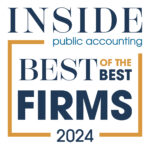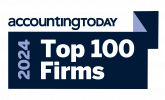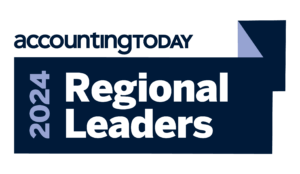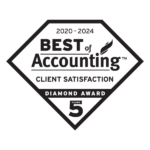This article was updated on April 14, 2020. Updates to this article will be made as new information becomes available.
Important Update on the Payroll Protection Program under the CARES Act
Schneider Downs continues to track the evolving landscape of Federal financial programs offered due to the disruption of the coronavirus (“COVID-19”). On April 14, 2020, the U.S. Small Business Administration (“SBA”) published a supplemental Interim Final Rule (“IFR”) relating to the implementation of Section 1102 – Paycheck Protection Program (“PPP”) and Section 1106 – Loan Forgiveness under the CARES Act. This IFR provides guidance for individuals with self-employment income as well as clarifications regarding eligible businesses.
The following article summarizes some of the key points of the supplemental IFR that are either new or provide clarification to previous guidance.
Self-Employed Individual Guidance
Eligibility
Self-employed individuals are eligible if they:
- Were in operation on February 15, 2020;
- Had self-employment income (such as independent contractor or sole proprietor);
- Had a principal place of residence in the U.S.; and
- Filed or will file a Form 1040, Schedule C for 2019.
The SBA will issue additional guidance for individuals with self-employment income who were: (a) not in operation in 2019, but were in operation as of February 15, 2020; and (b) will file a 1040, Schedule C for 2020.
However, a partner in a partnership cannot submit a separate loan application for themselves. Instead, the self-employment income of active partners may be reported as payroll costs (up to $100,000) on the partnerships PPP application. The SBA also points out that participation in the PPP may effect eligibility for state-administered unemployment compensation/assistance.
Maximum Loan Amount
The determination of the maximum loan amount is dependent upon whether or not there are employees.
No Employees
- Identify net profit from line 31 of the 2019 1040, Schedule C. If this amount is greater than $100,000, reduce it to $100,000;
- Determine average monthly net profit (i.e., divide Step 1 by 12);
- Multiply Step 2 by 2.5; and
- Add any EIDL loan made between January 31, 2020 and April 3, 2020 to be refinanced, less the amount of any advance under an EIDL COVID-19 loan.
The following documentation must be submitted with the PPP application for self-employed individuals:
- 2019 1040, Schedule C (regardless of whether or not the 2019 tax return has been filed);
- 2019 1099-MISC detailing non-employee compensation received, invoice, bank statement, or book of record that establishes self-employment; and
- 2020 invoice, bank statement, or book of record to confirm operation on or around February 15, 2020.
Employees
The following additional documentation must be submitted with the PPP application for self-employed individuals with employees:
- 2019 1040, Schedule C, Form 941, and state quarterly wage unemployment insurance tax reporting forms for each quarter in 2019; and
- Evidence of any retirement and health insurance contributions.
Loan Uses: How Can the Loan Proceeds be Used?
The following are approved uses of loan proceeds for self-employed individuals:
- Owner compensation replacement (based on 2019 net profit as discussed above);
- Employee payroll costs as defined by the interim final rule issued on April 2, 2020;
- Mortgage interest payments on any business mortgage obligation on real or personal property, business rent payments, and business utility payments:
- However, you must have claimed or be entitled to claim a deduction for such expenses on the 2019 1040, Schedule C. Expenses incurred between January 1, 2020 and February 14, 2020 cannot be considered for individuals with income from self-employment in 2019 (although, as mentioned above, additional rules for those not in operation in 2019, but in operation on February 15, 2020 are forthcoming);
- Interest payments on any other debt obligations incurred before February 15, 2020 (although these amounts are not eligible for forgiveness); or
- Refinancing a SBA EIDL Loan.
Loan Forgiveness
Up to full amount of both principal and interest (the CARES Act originally limited loan forgiveness to principal) can be forgiven if used for forgivable purposes. However, not more than 25% of the forgiven amount may be for non-payroll costs. The amount of actual loan forgiveness will depend, in part, on the total amount spent over the covered period (i.e., 8 weeks after loan disbursement) on:
- Payroll including salary, wages, and tips up to $100,000 annualized pay per employee;
- Covered benefits for employees (but not owners);
- Owner compensation replacement based on 2019 net profit with forgiveness is limited to 8/52 of 2019 net profit, but excluding any qualified sick/family leave equivalent amount for which a credit is claimed under Section 7002 or 7004 of the Families First Coronavirus Response Act;
- Payments of interest on mortgage obligations on real or personal property incurred before February 15, 2020 to the extent they are deductible;
- Rent payments on lease agreements in force before February 15, 2020 to the extent they are deductible; and
- Utility payments under service agreement dated before February 15, 2020 to the extent they are deductible.
The required documentation for loan forgiveness should include:
- If you have employees, Form 941 and state quarterly wage unemployment tax reporting forms;
- Evidence of business rent, business mortgage interest, or business utility payments; and
- 2019 1040 Schedule C to determine the amount of net profit allocated to the owner.
Clarification Regarding Eligible Businesses
The supplemental IFR provided additional information on businesses eligible for a PPP loan:
- Eligible businesses owned by directors or shareholders of a PPP lender are generally permitted to apply for a PPP loan through the lender with who they are associated subject to a few conditions; For example, a PPP lender may not provide a PPP loan to a director or officer that is a key employee of the PPP lender, however the director or officer may obtain a PPP loan from another lender.
- Businesses with legal gaming revenue that: (a) did not exceed $1 million in 2019; and (b) comprised less than 50% of the business’s 2019 total revenue are eligible;
If you need more information, please reach out to any of your contacts at Schneider Downs or contact Joel Rosenthal ([email protected]) or Steve Thimons ([email protected]) directly.
Please visit our Coronavirus resource page at schneiderdowns.com/our-thoughts-on/category/Coronavirus for related content.
Related Posts
No related posts.




